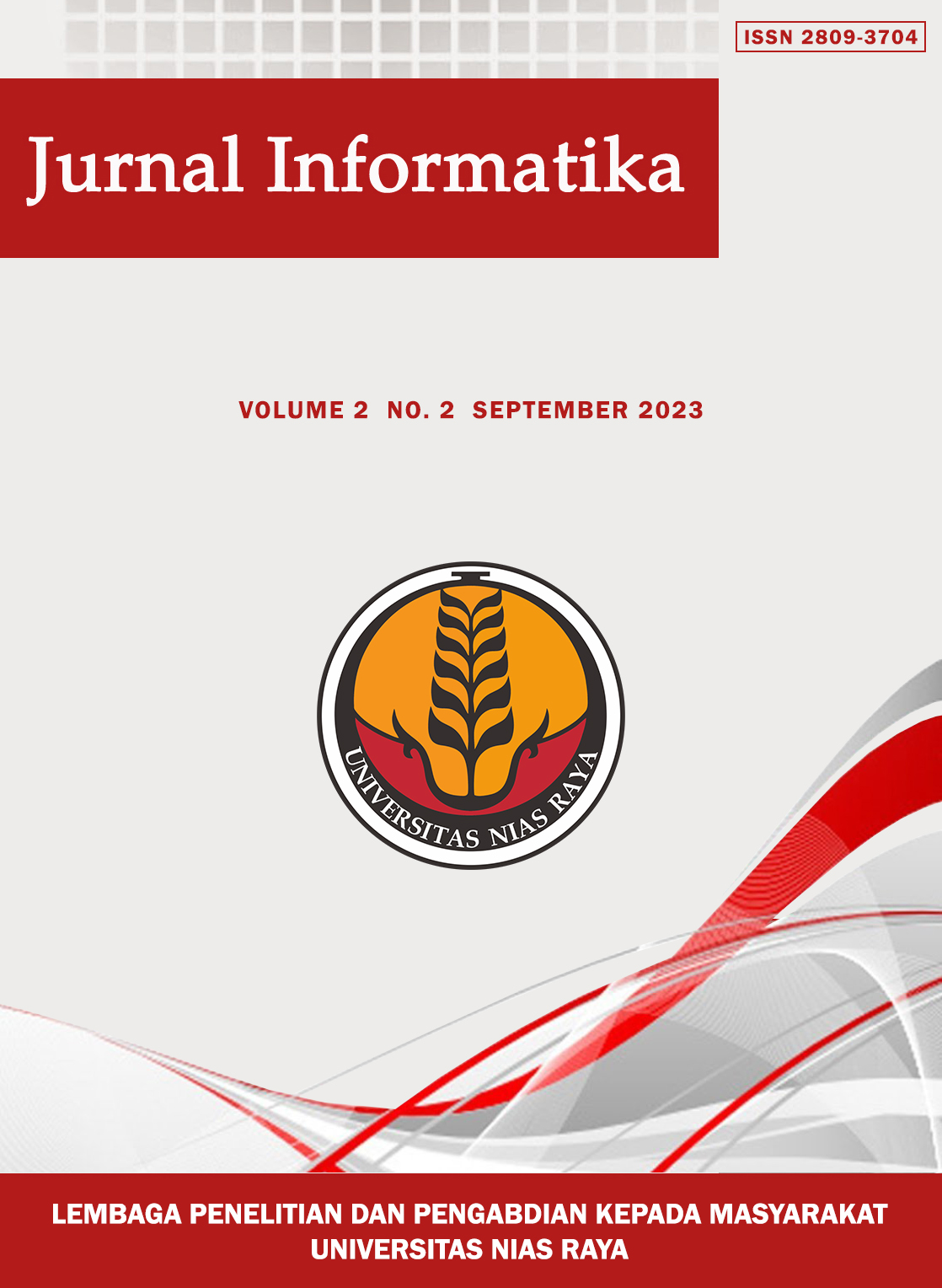Perencanaan Business Intelligence untuk Strategi Pengembangan Produk Unggulan Menggunakan Algoritma Support Vector Machine
Abstract
The government continues to encourage the government to accelerate Small and Medium Enterprises (SMEs) flagship products to enter the digital market, because the current digitalization of SMEs cannot be ignored, SMEs must be able to change their business to the digital realm. The strategy for developing superior SME products needs to be well planned, because a good and measurable strategy is very important for policy making. Development uses an approach that emphasizes that the driving force of development is commodities that are considered to be superior, both at the domestic, national and international levels. Superior products that have quality and are needed by customers require the right selection process, so we need a method to produce this information. Business Intelligence (BI) is a global term for all processes, techniques, and tools that support business decision making based on information technology. The strategy for developing superior products for SME products uses the criteria of production data, income, and SME respondent data in determining the priority list. A good product assessment based on priority can be done by BI using the classification method with the Support Vector Machine (SVM) algorithm. The research method carried out for planning the development of superior products for MSMEs in Tasikmalaya City is a research development research. To complete the classification of the right superior product development strategy, then Support Vector Machine algorithm can be used with test results using the Confusion Matrix with an average accuracy of 97%.
References
Tasikmalaya. (2022). Peraturan Daerah Kota Tasikmalaya Nomor 1 Tahun 2022 Tentang Rencana Pengembangan Industri Kota Tasikmalaya Tahun 2021-2041. Pemerintah Kota Tasikmalaya, 2 (8.5.2017), 2003–2005.
D. Chaerani, M. N. Talytha, T. Perdana, E. Rusyaman, and N. Gusriani, “Pemetaan Usaha Mikro Kecil Menengah (Umkm) Pada Masa Pandemi Covid-19 Menggunakan Analisis Media Sosial Dalam Upaya Peningkatan Pendapatan,” Dharmakarya: Jurnal Aplikasi Ipteks Untuk Masyarakat, vol. 9, no. 4, p. 275, Dec. 2020, doi: 10.24198/dharmakarya.v9i4.30941.
R. Purbasari, C. Wijaya, and N. Rahayu, “Identifikasi Aktor Dan Faktor Dalam Ekosistem Kewirausahaan: Kasus Pada Industri Kreatif Di Wilayah Priangan Timur, Jawa Barat,” AdBispreneur : Jurnal Pemikiran Dan Penelitian Administrasi Bisnis Dan Kewirausahaan, vol. 5, no. 3, p. 241, Feb. 2021, doi: 10.24198/adbispreneur.v5i3.29003.
C. Ma, S. Wei, T. Chen, J. Zhong, Z. Liu, and C. Liu, “Integration of Results from Convolutional Neural Network in a Support Vector Machine for the Detection of Atrial Fibrillation. IEEE Transactions on Instrumentation and Measurement, vol. 70, pp. 1–10, Jan. 2021, doi: 10.1109/tim.2020.3044718.
R. F. T. Wulandari and D. Anubhakti, “Implementasi Algoritma Support Vector Machine (Svm) Dalam Memprediksi Harga Saham Pt. Garuda Indonesia TBK,” Idealis, vol. 4, no. 2, pp. 250–256, Jul. 2021, doi: 10.36080/idealis.v4i2.2847.
H. Rudiawan, “Pemanfaatan Sistem Bisnis Intelijen (BI) Dalam Pengambilan Keputusan Manajemen Perusahaan,” Jurnal Ekonomi, vol. 23, no. 3, pp. 190–200, Oct. 2021, doi: 10.37721/je.v23i3.871.
C. E. W. Utomo, “Implementasi Bussiness Intelligent dalam e-Tourism Berbasis Big Data,” Journal of Tourism and Creativity, vol. 3, no. 2, p. 163, Oct. 2019, doi: 10.19184/jtc.v3i2.14065.
N. I. Fadilah, B. Rahayudi, M. T. Furqon, “Implementasi AlgoritmeSupport Vector Machine (SVM) Untuk Klasifikasi Penyakit Dengan Gejala Demam,” Jurnal Pengembangan Teknologi Informasi dan Ilmu Komputer, vol. 2, no. 11, pp. 5619–5625, Nov. 2018.
Copyright (c) 2023 Oding Herdiana

This work is licensed under a Creative Commons Attribution 4.0 International License.












